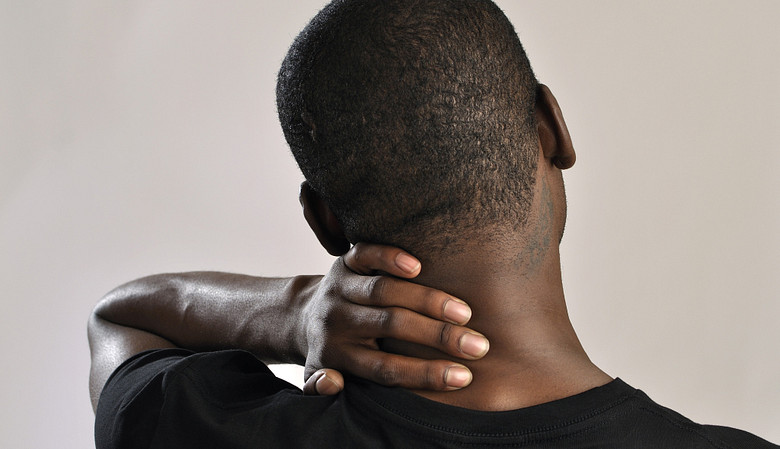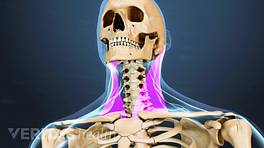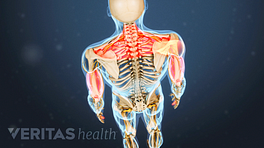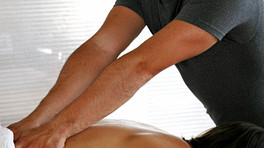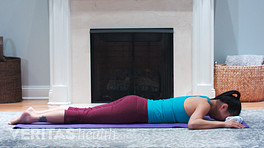A foam roller, also called a styrofoam cylinder, may help you reduce pain, tender spots, and stiffness in your neck and upper back. Keep the following tips in mind when you use a foam roller to stretch your muscles or perform a self-massage.
Roll out your knots
Slowly roll the foam roller until you find a tender spot or trigger point. Then apply gentle, steady pressure to that spot until pain subsides, but no longer than 60 seconds.
The foam roller can be used both vertically and horizontally to roll out trigger points in upper and mid back’s paraspinal muscles (erector spinae). When using it vertically, roll out each side of your spine separately. Crossing the arms on the chest helps to separate the shoulder blades to give better access to the paraspinal muscles.
Stretch your chest muscles
Tight chest muscles can lead to a hunched posture, which is a common contributor to neck pain. A foam roller can be used to perform a chest stretch, resetting your posture and ultimately protecting your neck.
- Place the foam roller vertically on the ground and sit on one end of it, your knees bent and feet flat on the floor.
- Gently lie back on the foam roller so that it lines up with your spine. Do not move on the foam roller.
- Place your arms at your sides and hold this position for 30 seconds.
This position pulls your shoulders back and provides a relieving chest stretch.
See Easy Chest Stretches for Neck Pain
Skip the lower back
Avoid using a foam roller on your lower back as the area over the kidneys (both sides) and liver (off to the right side) are sensitive and not protected by the bony spine or rib cage. Thus, we should avoid heavy, direct pressure over these pain-sensitive low back regions to prevent irritation and possible injury. If you have low back pain, stretching exercises or perhaps yoga are safer alternatives.
Watch 4 Easy Stretches for Lower Back Pain Video
Stop if you feel severe pain
Foam rollers may cause slight pain or discomfort as they release muscle knots, but not severe pain. If you feel sharp or stabbing pain, stop immediately.
See What to Consider Before Starting Exercises for Neck Pain
Consider other self-massage options
Because muscle knots in your neck or shoulders can be hard to reach, you may find that a self-massage device, such as a massage stick, massage hook, or a tennis ball, works better for you than a foam roller.
See Neuromuscular Massage Therapy
Using a foam roller—combined with stretching exercises, physical therapy, chiropractic manipulation, and/or medication—can be a simple, effective way to relieve neck pain. If you have chronic or severe neck pain, check with your doctor before using a foam roller.
